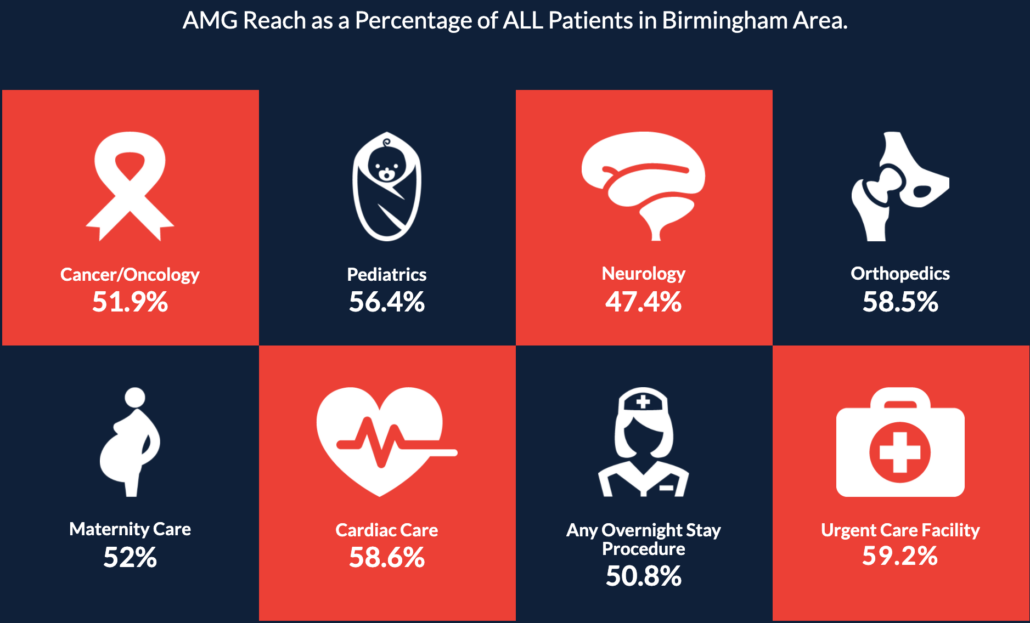How to Use Local Data to Develop an Effective Consumer-Directed Marketing Strategy
Big data in its various forms is a key ingredient to success in today’s business world—which is why using data effectively is essential to optimizing marketing efforts. With the plethora of digital applications in use today, gathering and analyzing data to inform marketing strategies and improve ROI has become an essential approach that can benefit physician practices of any size—including yours. The following key principles will help you do it.
Gather data about the local market.
Understanding patient needs within your local market is the first step to developing an effective consumer-directed marketing strategy. Such insights can be gained through patient-generated health data (PGHD) and anonymized (de-identified) data sets that reflect disease-specific demographics for local regions. AMG’s HIPAA-compliant data gathering process allows you to pull audience lists according to specific conditions.
Use data analytics to develop key insights.
Although data-gathering is the first step in this process, understanding what the data means is equally important. This is where data analytics comes in—and it’s increasingly important for healthcare marketing, especially for those working within a healthcare niche.
Specialty offices want to be able to market specifically to the patients who are most likely to need their services—instead of spending valuable marketing resources on those within the local population who don’t.
Additionally, it’s important to know which channels prospective patients frequently use, to ensure your marketing strategy incorporates those where they commonly engage.
Apply results to develop a targeted marketing strategy.
Once you understand the disease-specific demographics and needs of your local area—as well as the most effective channels to reach them—you can use these results to inform your marketing strategy.
Knowing more about your prospective patients will help you make better marketing decisions—like how to segment your customers and prospects into distinct groups and align with their preferred channels. Once this occurs, you can craft specific messages, ads and offers to create a targeted marketing strategy that will be much more effective than adopting a one-size-fits-all approach.
As with any marketing strategy, it’s essential to monitor results and adjust things as needed. Using a marketing platform with data analytics built in enables the measurement of specific results to provide the insights needed to adjust your strategy most effectively.
Optimize marketing ROI with the right type of support.
Armed with this information, healthcare marketers can effectively target and use the right messaging for prospective patients within their local areas. AMG owns the largest healthcare audience in Alabama through our own online sites and publications—which is how we’re able to use our data to effectively connect with prospective patients through targeted social and digital networks.
Through the use of our HIPPA-compliant tools, AMG is able to gain unique insights into the local patient market from a disease-specific perspective to help you tap into patient care needs. For example, AMG reach as a percentage of all patients in the Birmingham area looks like this:

By using AMG insights into local disease-specific demographics in combination with our digital marketing expertise and owned media outlets, you can better focus digital marketing efforts to specific patient populations in your area. If you would like to learn more about how we can help your practice, let’s talk.




